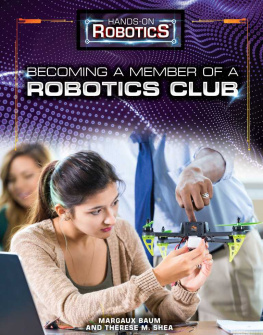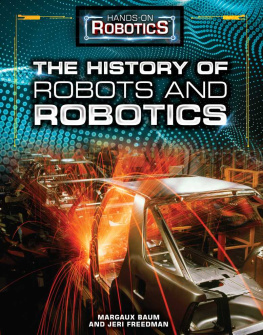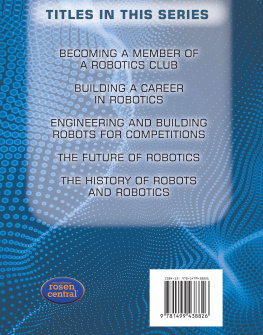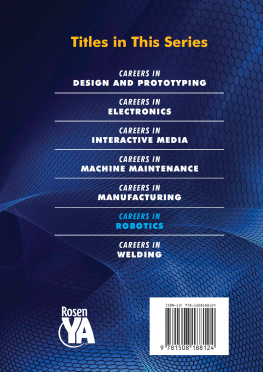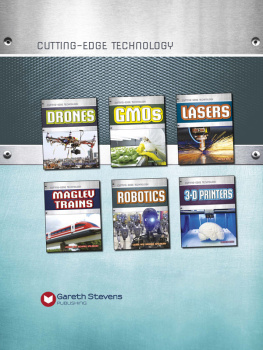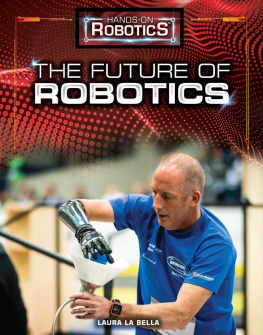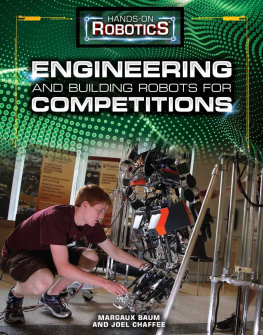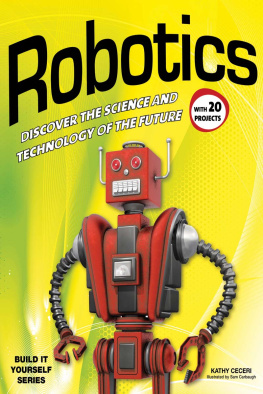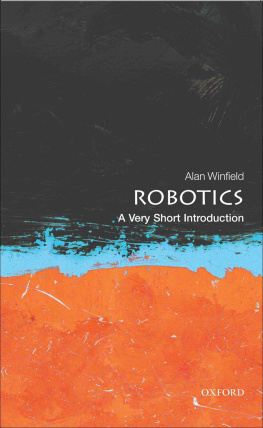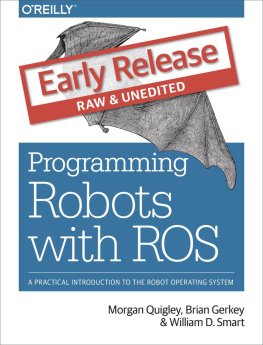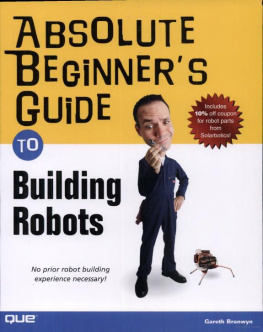Published in 2018 by The Rosen Publishing Group, Inc. 29 East 21st Street, New York, NY 10010
Copyright 2018 by The Rosen Publishing Group, Inc.
First Edition
All rights reserved. No part of this book may be reproduced in any form without permission in writing from the publisher, except by a reviewer.
Library of Congress Cataloging-in-Publication Data
Names: Baum, Margaux, author. | Shea, Therese, author.
Title: Becoming a member of a robotics club / Margaux Baum and Therese M. Shea.
Description: New York : Rosen Publishing, 2018. | Series: Hands-on robotics | Includes bibliographical references and index. | Audience: Grades 5-8. Identifiers: LCCN 2017025481| ISBN 9781499438789 (library bound) | ISBN 9781499438765 (pbk.) | ISBN 9781499438772 (6 pack)
Subjects: LCSH: RobotsDesign and constructionJuvenile literature. | RoboticsJuvenile literature. | School childrenSocieties and clubs Juvenile literature.
Classification: LCC TJ211.2 .B375 2018 | DDC 629.8/92dc23 LC record available at https://lccn.loc.gov/2017025481
Manufactured in the United States of America
D ecades ago, robotics and robots captured humanitys imagination in film and in the pages of science fiction novels, pulp magazines, and comic books. They seemed a distant future dream. But from the factory floor to law enforcement and the military to the household, robots are now a reality. They are on the verge of becoming a huge part of many peoples lives. The old image of a humanoid robot, seemingly pieced together with discarded transistor radio parts, is now a thing of the distant past. Todays robots can look like humans or animals, or take any shape or design we can conceive of.
A robot is a machine that performs actions that human beings or other living creatures can perform. At the most basic level, robots are programmed for simple actions and often repetitive ones. More advanced robots can execute more complicated tasks. Robots of the near and distant future may perform extremely complex motions and may even possess some form of artificial intelligence, and thus be able to respond to changes and make decisions much like humans do.
The robots of the future will likely come from the imaginations and hard work of those robotics enthusiasts just coming of age nowadolescents, teenagers, and college students all over the United States and around the world. In the last couple of decades, new venues for their skills have exploded in number. Robotics clubs are more plentiful than ever and are part of a growing scene of young inventors and entrepreneurs who are getting together in their spare time to build robots, some even bound for national and international competitions. Its both a fun and exciting hobby and great preparation for someone who really wants to build a career in robotics.
The technology needed to construct robots, as well as materials, parts, and tools, are more accessible and affordable than ever before. The internet revolution also makes it ever easier for young people to teach themselves many aspects of robotics, including engineering, programming, and other disciplines. They can also connect more easily than ever with others in their hometowns or regions who share their interests. In other words, the ground has never been more fertile for starting robotics clubs than it is nowadays.

The current generation of robotics clubs and teamswhether in elementary school, high school, or even collegeincludes the next generation of roboticists and specialists who will take robotics into the future.
What you do in your robotics club, once you start one, is entirely up to you and your fellow club members. Whatever the case, the pastime of thinking up, designing, building, and assembling robots, and entering them in competitions, is a growing and dynamic one.
A lthough they can vary greatly in appearance, modern robots of all kinds do share common characteristics. Whether they look like the humanoid robots or take another form, most have similar component parts and operate in similar ways. A robot brain, much like a human one, acts on the moving parts, including robotic limbs, to allow the robot to perform tasks. Robots that can make decisions, so to speak, react to changes in their environment.
First, a robot has one or more computers that act as its brain. In smaller robots, the computer is often in the form of a microcontroller, which can do even more than a microprocessor. It acts as the machines control: storing programs, receiving information, and sending instructions through an electrical circuit.
The circuit connects to the robots motors (or actuators). Some robots use electric motors and electromagnets (solenoids). Others use a hydraulic system (or pressurized fluid system) or a pneumatic system (or pressurized gas system). A robot may contain different systems, too.
The motors need power to drive them. Most robots are battery powered or plug into an electrical outlet. Hydraulic robots need a pump to pressurize the hydraulic fluid, and pneumatic robots need an air compressor or compressed air tanks.

From large, moving parts to the most delicate circuit boards, learning about robots and how to build and maintain them is a huge incentive to join a club where enthusiasts can develop their skills.
Like a human body, a robot must have parts that move. Some robots are just wheels, while others have movable metal or plastic segments. Like bones, the segments are connected with joints. The motors are the muscles that cause the segments to move when instructed by the computer and supplied with power.
Another important feature of a robot sets it apart from a regular computer. It has an ability to react to its environment. Sensors collect environmental information and send it to the computer. Sensors collect information about movement, temperature, smell, touch, sound, and light: all things that tell people how to react. Sensors may be in the form of video cameras or temperature gauges.
A SHORT HISTORY OF ROBOTS
Humanoid, human-made creations built from metal or other materials that mimic human or animal actions have existed for many centuries. Automatons, or self-operating machines, have existed in many cultures, including that of the ancient Greeks. The head of the Great Library of Alexandria, Egypt, around 270 BCE, the inventor Ctesibius was one of the first to build water-powered automata.
The term robot was first coined in a 1920 science fiction play called R.U.R. (Rossums Universal Robots), written by the Czech playwright and writer Karel Capek. For the following decades, robots captured the imaginations of people of all ages and were popular subjects in film, pulp magazines and comics, and novels.

